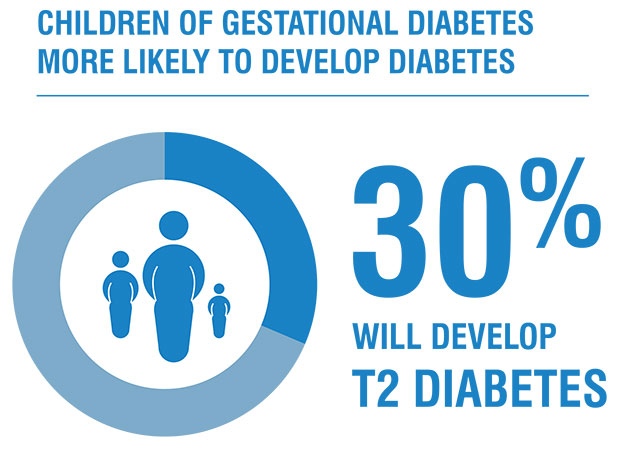Gestational Diabetes
Gestational diabetes leads not only to ill health for the mother but often leads to premature birth, excessive birth weight, infants who struggle with hypoglycaemia after birth and ongoing health issues for the child such as an increased likelihood of developing type 2 diabetes later in life.
Learn more here.
Research over recent years has found that ‘pre-programming’ of children’s health conditions can occur before conception and during pregnancy, and is influencing new thinking in clinical practice for maternity care and the importance of a healthy diet for mothers prior to conception.
Recent years have seen a dramatic growth in gestational diabetes in Western Sydney, predominantly in at-risk ethnic groups. The statistics are alarming with the rate approaching 18% of all pregnancies.
According to studies 1, 50% of women with gestational diabetes will be diagnosed with Type 2 diabetes within 10 years. .

1. Damm P, Houshmand-Oeregaard A, Kelstrup L, Lauenborg J, Mathiesen ER, Clausen TD. Gestational diabetes mellitus and long-term consequences for mother and offspring: a view from Denmark. Diabetologia. 2016 Jul;59(7):1396-1399. doi: 10.1007/s00125-016-3985-5. Epub 2016 May 12. PMID: 27174368.
According to the Australian Breastfeeding Association, there is now a growing evidence that breastfeeding has short- and long-term health benefits for mothers with GDM.
Breastfeeding also has benefits for mothers with diabetes:
You may have improved metabolic function and greater insulin sensitivity.4
Your body may use insulin more efficiently therefore your dose may be reduced.5

You may lose weight, have better sleep and improved bonding with your baby as a result of breastfeeding.
If you have had GDM, your risk of developing type 2 diabetes later in life is 7 times higher than someone who hasn’t had GDM.6
However:
- Breastfeeding for over 3 months will provide more protection against future diabetes.5
- Breastfeeding for a longer period of time lowers the incidence of diabetes.5
- Breastfeeding is a cost-effective way to reduce the risk of future diabetes.
Read more here:
- Breastfeeding intensity is protective for GDM in future pregnancies and also T2D, for mother and
child. Read more here on the BLliNG study here.


